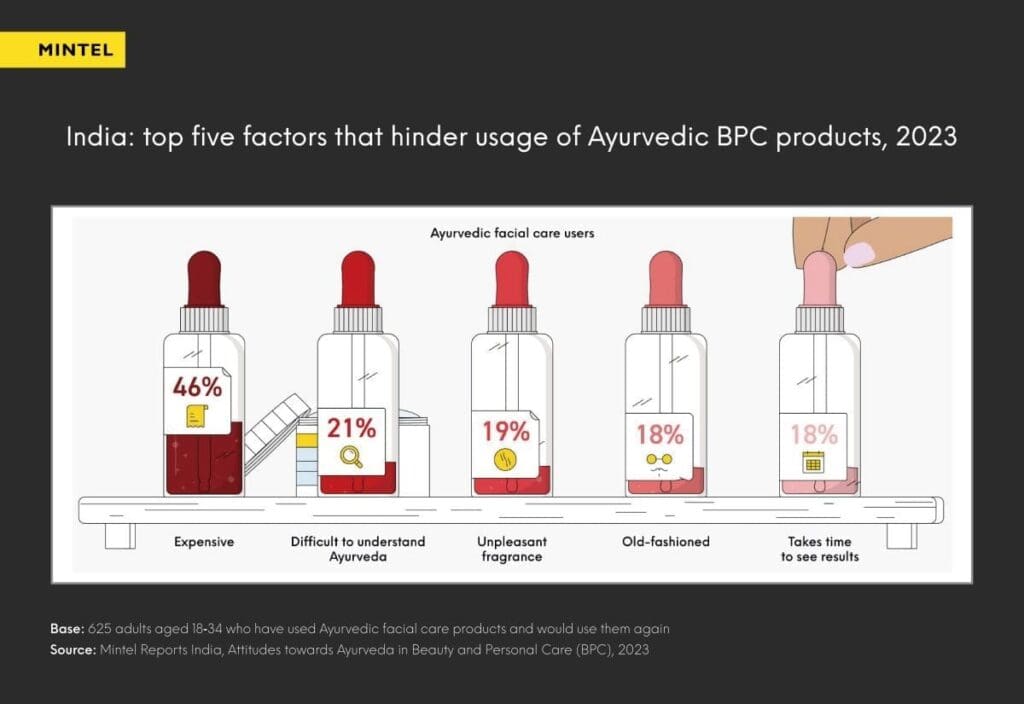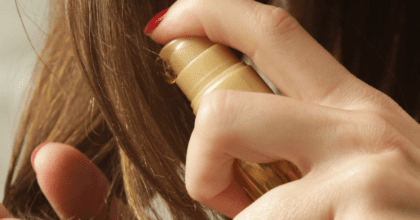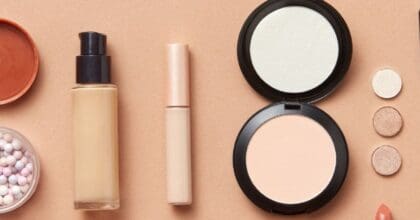Interest in Ayurvedic beauty surges, but 1 in 5 Indian consumers find it old-fashioned
Ayurveda, a centuries-old system of medicine originating in India, has witnessed a resurgence in popularity due to heightened consumer interest in self-care. However, the latest research from Mintel reveals that 1 in 5 Indian consumers still consider Ayurvedic beauty practices to be old-fashioned.
Over the last five years, between April 2018 and March 2023, India has been at the forefront of Ayurvedic beauty and personal care, accounting for half (50%) of global product launches in this category, according to Mintel Global New Products Database. Ayurvedic haircare launches (21%) comprise a greater share of the sector compared to facial care (14%), highlighting an opportunity to build on Ayurvedic facial care in the local market.
The increasing emphasis on inner health and well-being for outward appearance is driving the trend towards Ayurvedic beauty. Mintel research indicates that 36% of Indian consumers strongly believe that Ayurvedic ingredients contribute to overall well-being. Furthermore, 30% of consumers prioritise beauty and personal care products with Ayurvedic ingredients for their absence of harmful chemicals.
Tanya Rajani, Principal Beauty & Personal Care Analyst, Mintel Reports India, said:
“During the pandemic, Ayurveda experienced a surge in popularity as consumers sought health and wellness protection by embracing this ancient system of medicine. Additionally, we’re observing an increased desire among consumers to reconnect with one’s heritage and cultural origins, which has significantly contributed to the sustained momentum of Ayurveda.
“The government has actively supported the growth of Ayurveda by establishing the Ministry of Ayush to revive and certify Ayurvedic products. Manufacturers are awarded a quality seal based on third-party evaluation, allowing their products to enter domestic and international markets with Ayush Standard and Ayush Premium Marks.”
Barriers to usage: Price, ‘old-fashioned’ image, and slow results
Mintel research highlights that nearly half (46%) of consumers who have used Ayurvedic facial care products, and intend to use them in the future, cite price as a major barrier. Additionally, the perception of Ayurvedic products as ‘old-fashioned’ (18%), and the slow pace of visible results (18%), are cited as other barriers. Rajani highlights the need to modernise Ayurveda to remain relevant and increase the category’s value by justifying higher costs.

Consumers also seek proof of credibility and efficacy for Ayurvedic beauty products: 19% of Ayurvedic facial care users, and 16% of consumers overall, believe that Ayurvedic products should provide evidence of effectiveness. Likewise, the about same proportion of Ayurvedic facial care users (19%) agree that science-backed beauty products offer superior efficacy compared to Ayurvedic products.
Rajani continued, “Science-backed products often leverage the latest research and technology, undergoing rigorous testing and clinical trials to prove safety and effectiveness. This may explain why Ayurvedic facial care users perceive science-backed beauty products as more effective than traditional Ayurvedic ones. Moreover, incorporating scientific advancements can help overcome the perceived issue of slow results, which we know is a concern for 18% of this segment.”
Ayurvedic colour cosmetics: A growing category
According to Mintel research, 41% of Indian women have used Ayurvedic makeup and intend to continue doing so. Additionally, 17% of female non-users express an interest in trying Ayurvedic makeup, suggesting an opportunity to expand the Ayurvedic makeup user base.
Compared to 30% of consumers overall, where the avoidance of harmful chemicals is the primary motivator for using Ayurvedic beauty and personal care products, female Ayurvedic makeup non-users’ key motivations are multifunctional benefits and medicinal properties (37%, respectively).
“The colour cosmetics category has yet to fully capitalise on Ayurvedic positioning. Brands have an opportunity to attract potential Ayurvedic makeup users by offering hybrid products that combine makeup and skincare functionalities — for example, integrating Ayurvedic ingredients like turmeric, known for its anti-inflammatory benefits, into products targeting acne-prone skin. Moreover, as skin safety is a crucial consideration for base makeup, colour cosmetics brands can leverage Ayurvedic positioning to convey that their products are safer and gentler on the skin,” Rajani concluded.
Additional research on Indian consumer attitudes toward beauty and personal care, and interviews with the analyst are available upon request from the Mintel Press Office. For those interested in purchasing the full report, please visit the Mintel Store.

Tanya is Mintel’s Principal Beauty and Personal Care Analyst based in Mumbai. She specialises in analysing and providing insights into India’s beauty and personal care market and consumer trends.
-
Mintel StoreGet smart fast with our exclusive market research reports, delivering the latest data, innovation, trends and strategic recommendations....View reports
-
Mintel LeapMintel Leap is a revolutionary new AI-powered platform that will transform your research process....Book a demo







































